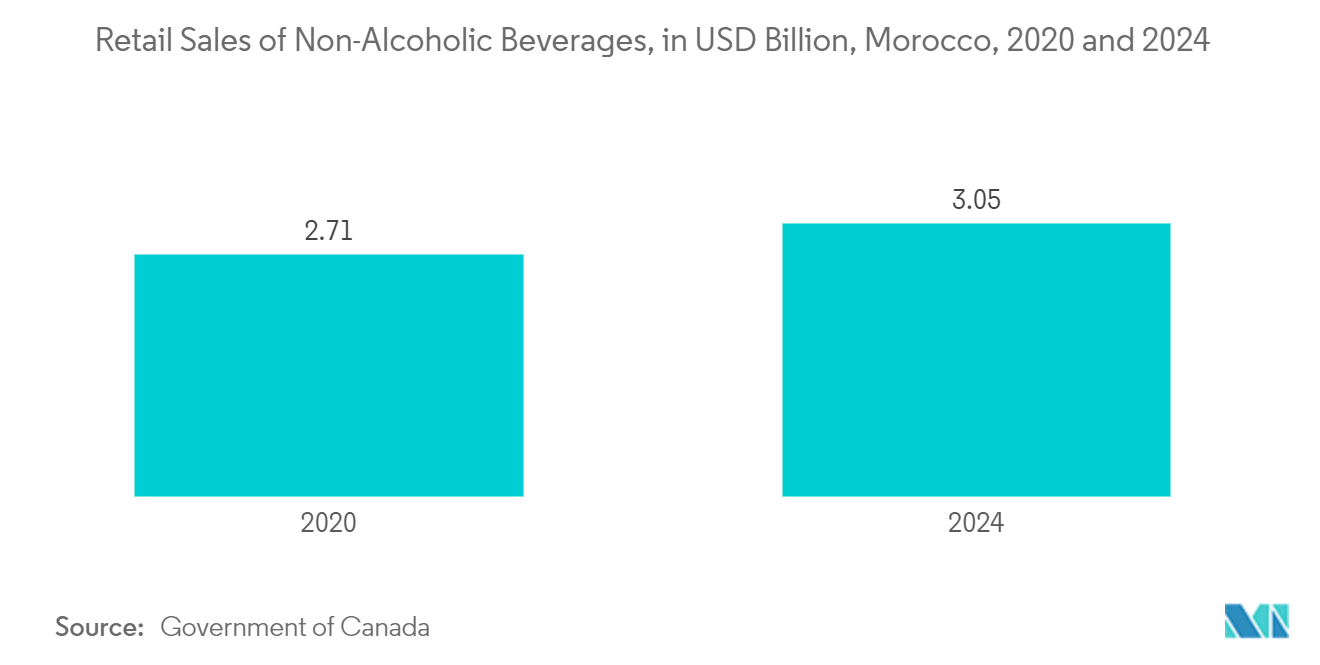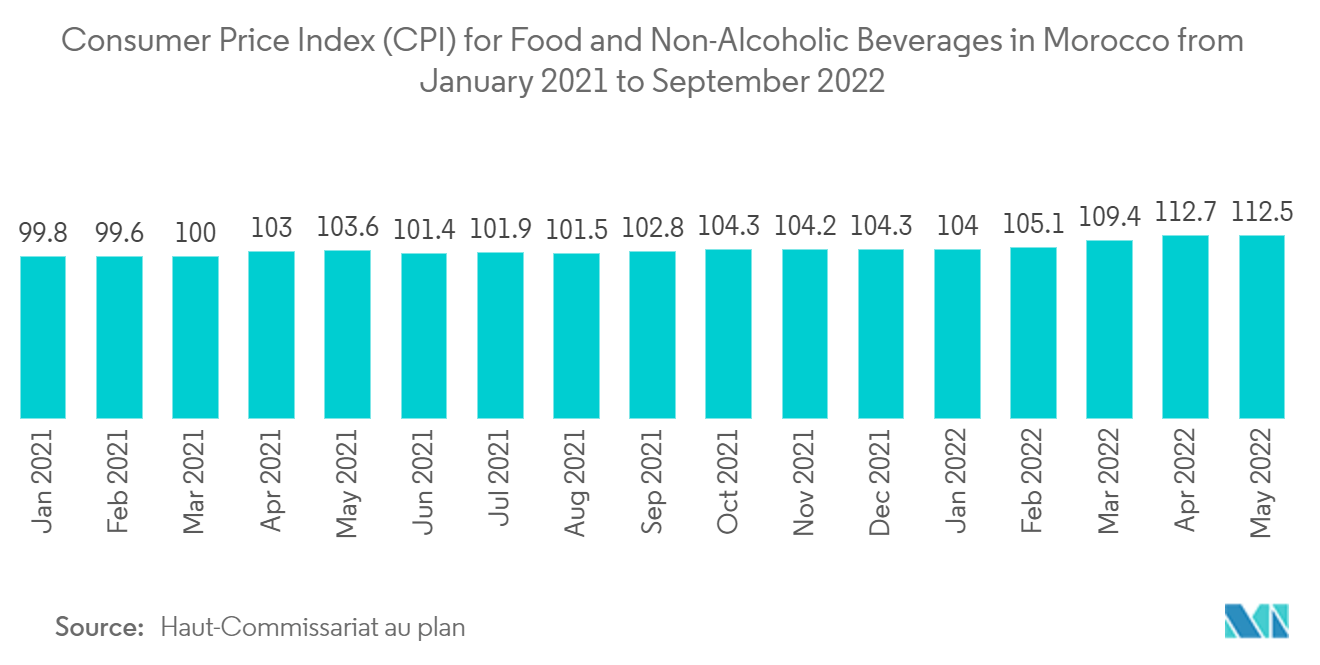Market Trends of Morocco Flexible Packaging Industry
Plastic to Dominate the Material Segment
- Morocco is focused on collecting solid waste, especially non-biodegradable post-consumer plastics, mainly from the packaging industry. The government of Morocco is focused on developing action plans to reduce the amount of marine plastic pollution that enters the oceans. It plans to prevent this by adopting a "circular economy" to minimize waste and pollution by extending the life cycle of plastic products and promoting the sharing of materials and products, which is expected to promote the growth of flexible pouches during the forecast timeframe.
- Additionally, Morocco plastic recycling company Sumilon is expanding operations to fulfill the growing global demand for recycled plastics. Its research showed that only 1,000-1,200 tonnes are collected yearly. The company aims to process 90% of this supply in Morocco, and its new production line is anticipated to come online towards the end of 2023. The company is boosting its presence in Morocco and other parts of Africa.
- Moreover, organizations are focused on expanding their business in the country. For instance, in July 2023, Smurfit Kappa inaugurated a packaging facility in Rabat, Morocco. The group has invested over EUR 35 million (USD 37.5 million approximately) in the 25,000 m2 facility, which will be completed from ground break to operation in seven months and will support 400 direct and indirect jobs. The facility will allow the company to efficiently supply advanced and sustainable packaging solutions to local customers and multinationals in Morocco. Such expansion will leverage the market for bags and pouches in the country.
- Furthermore, growing demand for non-alcoholic beverages is expected to fuel market growth. Flexible packaging is crucial in reducing waste and allowing online brands to innovate their packaging to enhance the experience. There is a considerable high demand for flexible packaging in the beverage sector due to reduced production, shipment costs, and ease of handling. According to the Government of Canada, The total retail sales of beverages in Morocco in 2020 were estimated at more than USD 3.1 billion. This included approximately USD 2.7 billion in non-alcoholic beverage sales. By 2024, the total retail sales value is expected to be around USD 3.5 billion, with USD 3.1 billion million generated from non-alcoholic beverage sales.

Food Industry to be the Largest End User
- The food processing industry in Morocco contributes nearly 6% of the country's GDP. It benefits from first-rate manufacturing facilities, good infrastructure, and easy market access in neighboring African nations. Over the medium-term forecast period, Fitch Solutions indicated a favorable outlook for Morocco's food service market. It anticipated that between 2022 and 2026, nominal household spending on restaurants and hotels (as a stand-in for food services) would increase at a compound annual growth rate of 3.9%.
- Morocco has been working to produce local plastic, metallic, and paperboard packages because packaging is an integral part of agrifood production and distribution. Morocco's federations in the agrifood and packaging industries agreed in June 2022 to reduce its reliance on imports. Moroccan players in the agrifood and packaging industries banded together to lessen the MAD 8 billion (~USD 786 million) burden of imports after being adversely affected by the economic crisis and the rise in raw material prices.
- Market players are increasing their investment, partially supported by the government's initiatives to become a self-sustained food economy. Packaging organizations are poised to witness growth owing to this development. For instance, in May 2022, the largest retailer in Morocco, Retail Holding, and the UAE-based packaging manufacturer Hotpack Global announced plans to take 80% of the country's packaging market jointly.
- Moreover, in March 2022, International Paper (IP), one of the largest manufacturers of packaging, pulp, and paper products made from renewable fibers, announced a new 2020 investment program worth MAD 100 million (nearly USD 10 million) for its Moroccan production facilities. The purchase of new machinery to increase the plant's production capacities is planned to receive MAD 65 million (nearly USD 7 million) as part of this investment program. The goal is to strengthen International Paper's position in the fresh produce industry.
- Further, Moroccan federations in the agrifood and packaging sectors agreed to cut the country's reliance on imports and create 7,500 direct job opportunities by 2060. Impacted by the economic crisis and surge in the prices of raw materials, Moroccan actors in the agrifood and packaging industries came together to reduce the MAD 8 billion (USD 786 million) burden of imports. The price rise has prompted Moroccan agrifood federations, in partnership with the packaging industry, to increase the sector's integration rate to 39%, up from the current rate of 26%. This is causing players to set up their regional manufacturing units to meet the growing demand for paper packaging.

